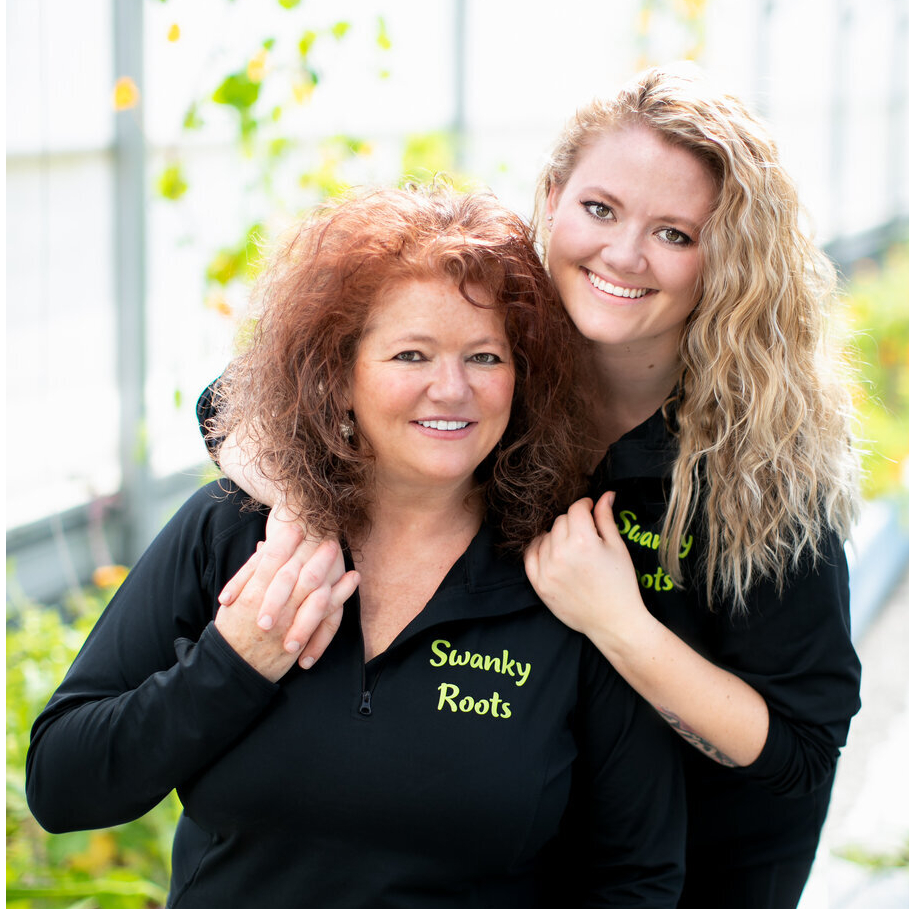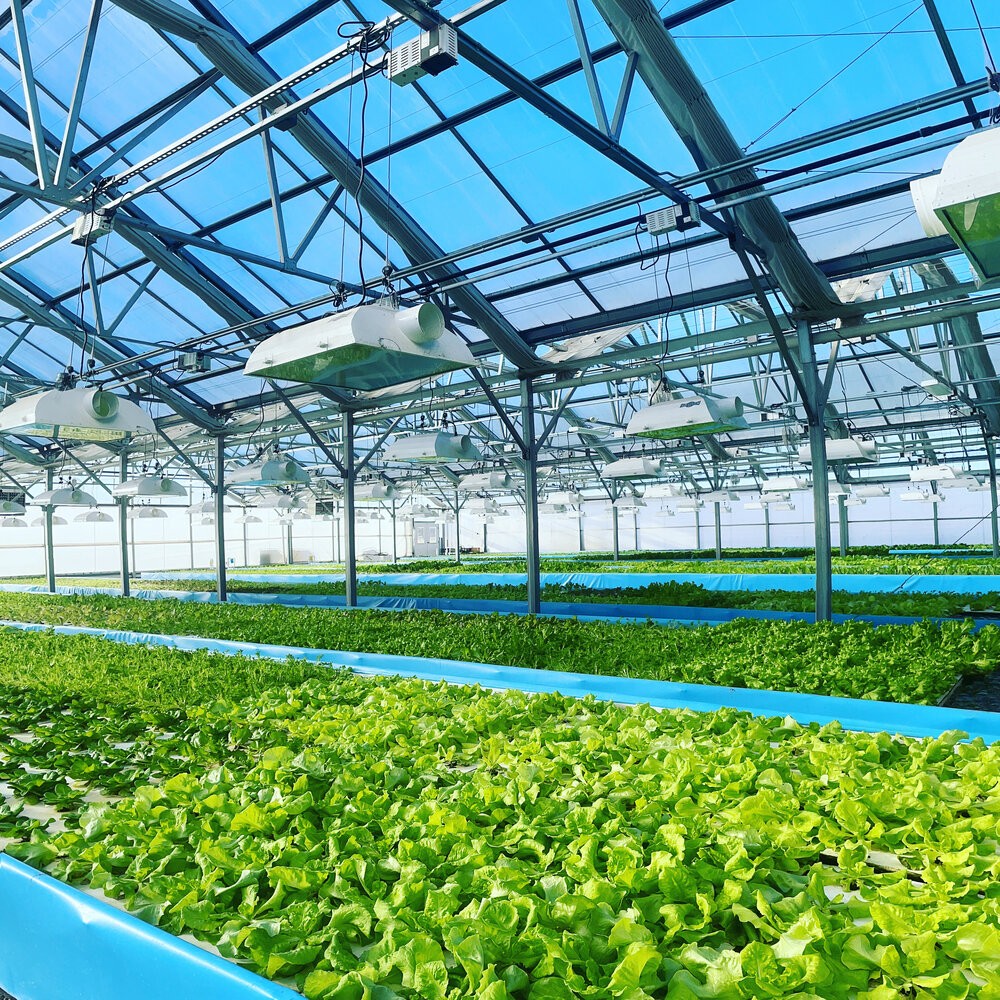Producer


Swanky Roots
Contact: Veronnaka Evenson
City: Billings, MT, 59101
County: Yellowstone
About Us
We are a small team with big dreams that is dedicated to providing fresh, healthy food for our community! Swanky Roots is a local, family-owned small business that was founded in 2016 by mother - daughter team Ronna Klamert and Veronnaka Evenson. Ronna had a vision of growing great food for her loved ones and Veronnaka agreed this seemed like a fantastic adventure. Delicious leafy greens such butterhead and leaf lettuce are available all year long. We have a farm store at the greenhouse where the public can shop our local products. We also partner with local restaurants and businesses to get our greens out in the community. Lettuce is the main focus, but we also have kale, Swiss chard, other leafy greens, and a variety of herbs and other vegetables we grow on a rotating schedule.
Veronnaka graduated from Montana State University in 2016 with degrees in Plant Science and Agricultural Education with a minor in Biology Teaching. She loves being outdoors with her four doodles Harley, Moose, Bailey and Clint. She met her husband in third grade, they were high school sweethearts and married in 2017. They welcomed their first child April 2023. Her dream is to see the 60 acres the greenhouse sits on turn into an agricultural oasis for the community. She loves helping people connect with nature and understand where our food comes from.
Ronna has always loved gardening and instilled a love of plants and a passion for people in Veronnaka from a young age. She enjoys helping her husband with their angus beef cattle operation, connecting with friends, and serving her community. Through some research the mother-daughter duo decided that aquaponics would be their best option to combine their passions.
Hope Stott has been with Swanky Roots since the very beginning, helping install the system from the ground up. She is now the Operations Manager and helps keep the day to day running smoothly. She has two adorable pugs, Aurora and Phillip and enjoys spending time with them and her husband.
Veronnaka graduated from Montana State University in 2016 with degrees in Plant Science and Agricultural Education with a minor in Biology Teaching. She loves being outdoors with her four doodles Harley, Moose, Bailey and Clint. She met her husband in third grade, they were high school sweethearts and married in 2017. They welcomed their first child April 2023. Her dream is to see the 60 acres the greenhouse sits on turn into an agricultural oasis for the community. She loves helping people connect with nature and understand where our food comes from.
Ronna has always loved gardening and instilled a love of plants and a passion for people in Veronnaka from a young age. She enjoys helping her husband with their angus beef cattle operation, connecting with friends, and serving her community. Through some research the mother-daughter duo decided that aquaponics would be their best option to combine their passions.
Hope Stott has been with Swanky Roots since the very beginning, helping install the system from the ground up. She is now the Operations Manager and helps keep the day to day running smoothly. She has two adorable pugs, Aurora and Phillip and enjoys spending time with them and her husband.
Practices
Swanky Roots is committed to producing our product through sustainable methods. With the world population growing and the amount of productive land decreasing, our aquaponics system as the ability to produce multiple products within one greenhouse. And the best part--it's year-round production right here in Billings, Montana! We want to share the wonderful world of aquaponics with our community and why we believe it is important for the future of agriculture.
SUSTAINABLY using aquaponics: Aquaponics is a combination of aquaculture and hydroponics. Aquaculture is the raising of aquatic animals, like fish, in tanks. Hydroponics refers to cultivating plants in a symbiotic environment. Aquaponics combines aquaculture and hydroponics to form one interconnected growing system between the fish and the plants. It is a method of growing plants and fish together in a closed system so that the fish “feed” the plants, and the plants “clean” the water for the fish.
Beyond Organic: Aquaponic systems work because of their living components; therefore, aquaponic growers are held to a life standard beyond organic standards. In organic farming, there are approved pesticides, herbicides, and fertilizers that are used for killing pests, weeds, and promoting growth. In aquaponics, you cannot use the same chemicals because they would kill the fish and bacteria. The same is true for commercial aquaculture-the antibiotics that are commonly used to fight fish diseases cannot be used in aquaponic systems because they would kill the nitrifying bacteria. Aquaponics creates and uses its own natural fertilizer (fish waste), and keeps it contained within the system.
SUSTAINABLY using aquaponics: Aquaponics is a combination of aquaculture and hydroponics. Aquaculture is the raising of aquatic animals, like fish, in tanks. Hydroponics refers to cultivating plants in a symbiotic environment. Aquaponics combines aquaculture and hydroponics to form one interconnected growing system between the fish and the plants. It is a method of growing plants and fish together in a closed system so that the fish “feed” the plants, and the plants “clean” the water for the fish.
Beyond Organic: Aquaponic systems work because of their living components; therefore, aquaponic growers are held to a life standard beyond organic standards. In organic farming, there are approved pesticides, herbicides, and fertilizers that are used for killing pests, weeds, and promoting growth. In aquaponics, you cannot use the same chemicals because they would kill the fish and bacteria. The same is true for commercial aquaculture-the antibiotics that are commonly used to fight fish diseases cannot be used in aquaponic systems because they would kill the nitrifying bacteria. Aquaponics creates and uses its own natural fertilizer (fish waste), and keeps it contained within the system.
